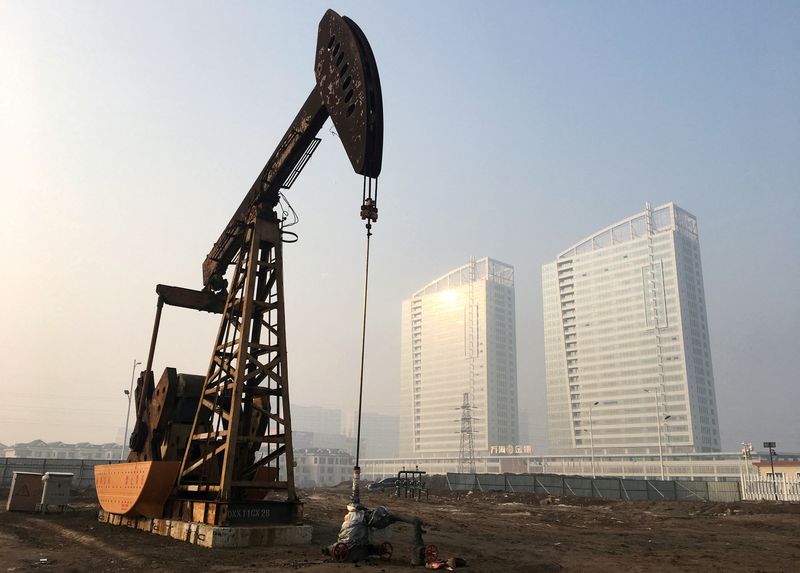
© Reuters. FILE PHOTO: A pumpjack is seen at the Sinopec-operated Shengli oil field in Dongying, Shandong province, China January 12, 2017. Picture taken January 12, 2017. REUTERS/Chen Aizhu//File Photo
DX
-0.08%
Add to/Remove from Watchlist
Add to Watchlist
Add Position
Position added successfully to:
Please name your holdings portfolio
Type:
BUY
SELL
Date:
Amount:
Price
Point Value:
Leverage:
1:1
1:10
1:25
1:50
1:100
1:200
1:400
1:500
1:1000
Commission:
Create New Watchlist
Create
Create a new holdings portfolio
Add
Create
+ Add another position
Close
LCO
+1.55%
Add to/Remove from Watchlist
Add to Watchlist
Add Position
Position added successfully to:
Please name your holdings portfolio
Type:
BUY
SELL
Date:
Amount:
Price
Point Value:
Leverage:
1:1
1:10
1:25
1:50
1:100
1:200
1:400
1:500
1:1000
Commission:
Create New Watchlist
Create
Create a new holdings portfolio
Add
Create
+ Add another position
Close
By Shariq Khan
NEW YORK (Reuters) -Oil prices settled more than a dollar a barrel higher on Friday, notching their biggest weekly gains since October, as the U.S. dollar dropped to a seven-month low and more indicators pointed toward growing demand from top oil importer China.
Brent crude futures settled at $85.28 a barrel, up by $1.25, or 1.5%. West Texas Intermediate (WTI) crude futures rose for the seventh-straight session to settle at $79.86 a barrel, up by $1.47, or 1.9%.
Brent gained 8.6% this week, while WTI rose by 8.4%, recouping most of the previous week’s losses.
The U.S. dollar index slumped to the lowest in more than seven months, a day after data showed inflation fell in December for the first time in 2-1/2 years, feeding hopes the Federal Reserve would slow its rate hikes.
A weaker greenback tends to boost demand for oil, making it cheaper for buyers holding other currencies.
Recent Chinese crude purchases and a pick-up in road traffic in the country are also fuelling hopes of a demand recovery in the world’s second-largest economy following the reopening of its borders and easing of COVID-19 curbs after protests last year.
“Everyone is looking at Chinese mobility indicators and they point upward, indicating recovering oil demand and supporting prices,” said UBS analyst Giovanni Staunovo.
“Next thing to watch is if this translates also into higher Chinese crude imports and if energy agencies (IEA, OPEC) revise upwards their (first quarter) demand estimates,” Staunovo said.
The Organization of the Petroleum Exporting Countries and allies, including Russia, will meet in February to assess market conditions, and there is some concern that the group could cut oil output again to lift prices after recent declines.
“We have the seven-day winning streak under our belt… but we are still nowhere near where we were the last time OPEC+ folks cut production,” Mizuho analyst Robert Yawger said.
OPEC+ had announced a 2-million-barrel-per-day cut to production in October as global oil prices fell under $90 a barrel.
Source: Investing.com



























